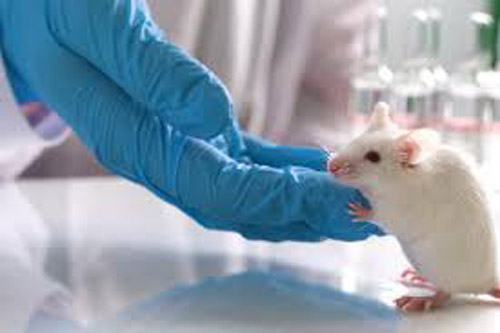
Inhaled vaccine induces fast, strong immune response in mice and non-human primates
Islamabad: Researchers demonstrate in a proof-of-concept study that a phage-based inhalation delivery system for vaccines generates potent antibody responses in mice and non-human primates, without causing lung damage. The findings suggest that a safe and effective lung delivery system could one day be used for vaccines and therapeutics against respiratory diseases. The results appear December 10 in the journal Med.
“This translational strategy potentially enables more effective delivery of therapeutics or vaccines while reducing the chance of toxic side effects,” says co-senior study author Wadih Arap of Rutgers Cancer Institute of New Jersey. “In ongoing research, we hope that this work will play a crucial role in the development of targeted vaccines and treatments to block the spread of respiratory infectious diseases, possibly for the current COVID-19 pandemic, especially in the setting of underserved populations.”
Pulmonary delivery has many advantages over other routes of administration, particularly for the development of vaccines or therapeutics against respiratory infections, because the vaccines arrive directly at the site of the infection. Inhalation-based vaccination is needle free and minimally invasive, which is especially attractive for administrating multiple doses. It improves therapeutic bioavailability while reducing potential side effects by achieving a more rapid onset of action than needle-based vaccination.
“The very extensive and accessible layer of cell surfaces in the lungs is highly vascularized, which allows rapid absorption of molecules throughout circulation in much higher concentrations by avoiding the drug-metabolizing enzymes of the gastrointestinal tract and liver,” explains co-senior study author Renata Pasqualini of Rutgers Cancer Institute of New Jersey. “Because the lungs are constantly being exposed to pathogens from the air, they likely have a high level of immune defense activity, and therefore represent an efficient site for immune protection against airborne pathogens.”
Lung delivery could protect against airborne pathogens that cause diseases such as tuberculosis, influenza, Ebola, measles, and COVID-19. But this approach has not been adopted widely, partly because the underlying physiological mechanisms remain largely unknown. Answering this question is critical for designing a general lung delivery system for widespread use.
In the new study, Arap and Pasqualini devised and validated a safe, effective lung delivery system that could be used for a broad range of translational applications, and showed how it works. The approach involves the use of phages — viruses that can infect and replicate within bacterial cells. In certain types of vaccines, phage particles that carry peptides are used to trigger protective immune responses.
First, the researchers screened for and identified a peptide — CAKSMGDIVC — that could efficiently deliver phage particles across the pulmonary barrier and into the bloodstream. Specifically, phage particles that display CAKSMGDIVC on their surface are absorbed into the body when the peptide binds to and is internalized through its receptor, ?3?1 integrin, on the surface of cells lining the lung airways. Inhaled delivery of CAKSMGDIVC-displaying phage particles elicited a robust antibody response against the phage particles in mice and non-human primates, without damaging the lungs.
According to the authors, the new lung delivery system is safe and effective, and has unique advantages for the development of vaccines and therapeutics against airborne pathogens. Phage particles induce very strong and sustained immune responses, without producing toxic side effects. Because they do not replicate inside eukaryotic cells, their use is generally considered safe when compared to other classic viral-based vaccination strategies. In fact, phage particles have been used as antibiotics against multidrug-resistant bacteria and as vaccine carriers for decades.
In terms of practical implementation, phage particles are highly stable under harsh environmental conditions, and their large-scale production is extremely cost-effective compared to traditional methods used for vaccine production. Moreover, unlike conventional peptide-based vaccines that often become inactivated, the new lung delivery system has no cumbersome, stringent, or expensive cold-chain requirements for field applications in the developing world. “In addition, phage particles are versatile and can be genetically engineered by standard molecular biology technology,” Arap says.
Moving forward, the researchers plan to examine the kinetics of pulmonary transport after multiple doses and investigate cell-based immune responses. “It is important to note that all this work was in preclinical models, so we look forward to the translation of our approach to clinical applications such as lung-targeted drug delivery or pulmonary-based vaccination,” Pasqualini says.
